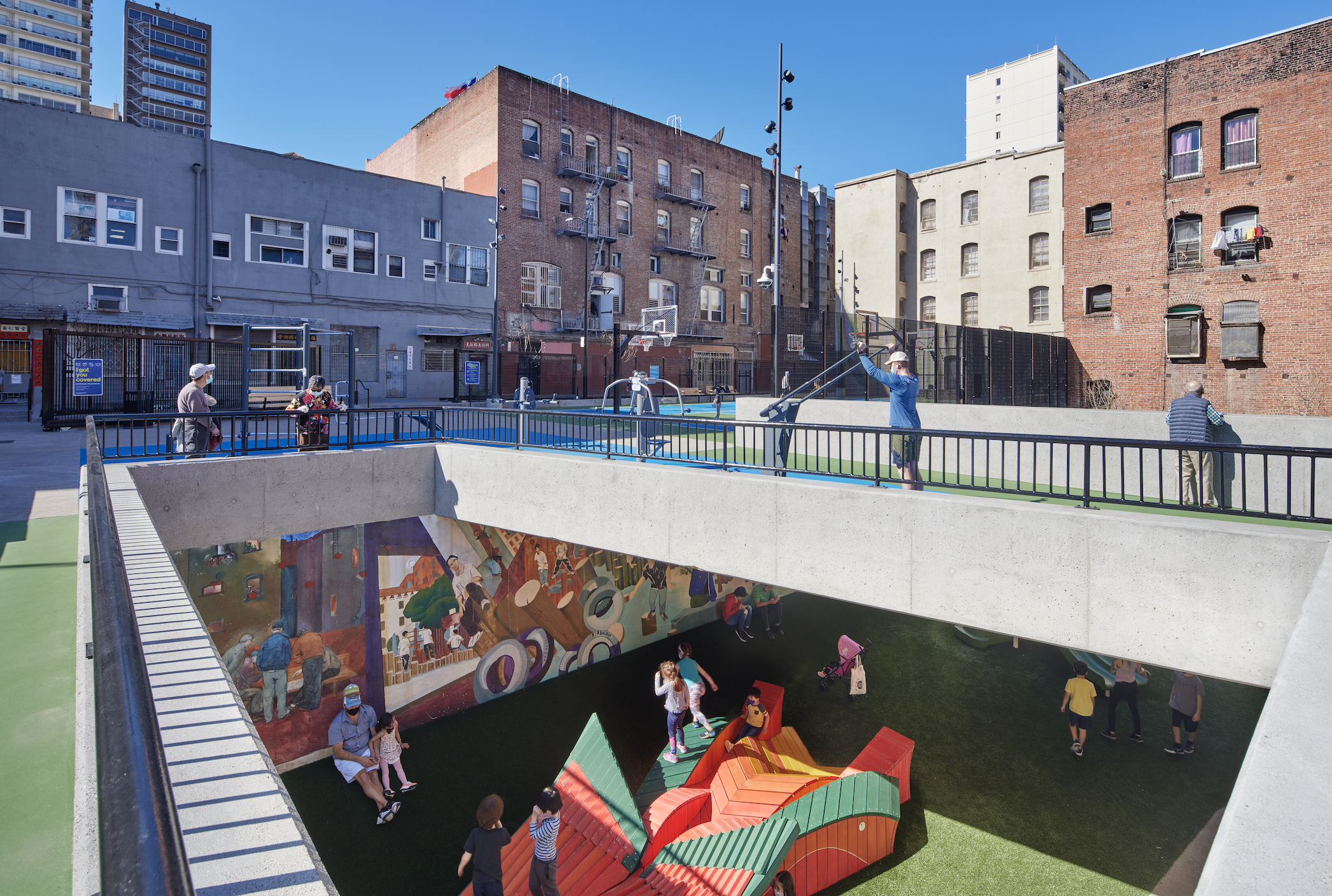Reincarnated park a celebration of its community
Willie ‘Woo Woo’ Wong Park and Playground in San Francisco is one of Chinatown’s few historic, significant outdoor spaces. It’s served the community since 1927, but a recent $20 million renovation which encourages active outdoor recreation means it’s now used a lot more by residents of all ages. And it’s theme now better reflects the community it sits in.
Originally called Chinese Playground the park was renamed in 2006, honouring a local Chinese-American basketball star from the 1950s. Willie Wong earned his nickname from a local sports reporter, because crowds used to shout “Woo Woo” every time he scored.
The playground is the only space dedicated to active outdoor recreation for all residents within the entire neighbourhood. Photo credit: Bruce Damonte.
CMG Landscape Architecture, in collaboration with the City of San Francisco Recreation and Parks Department, held a series of multi-lingual surveys, public workshops and focus groups to engage the community and find out what they wanted from the park.
Respecting the original park’s goals and honouring the community’s needs, the design prioritises flexible, multi-use play and connected circulation of its multiple levels to create a large outdoor space in the urban district, CMG says.
An exercise circuit overlooks the children’s play area. Photo credit: Bruce Damonte.
“The reincarnated park is more than just an outdoor playground, it is a celebration of the Chinatown community,” CMG says. “Although a complete transformation of its previous design iterations, Willie “Woo Woo” Wong Playground and Park is fully integrated into the urban fabric of the Chinatown neighbourhood.”
The design restored a Pagoda that was original to the playground, to now serve as an entrance to the park, incorporated dragon and phoenix play structures, and preserved existing murals. In Chinese mythology, the dragon symbolises power, strength and good luck. The phoenix is said to be a rare, immortal bird who foretells harmony at the ascent of a new emperor.
The dragon and phoenix play structures in the middle level. Photo credit: Bruce Damonte.
Physically bound by buildings, Willie “Woo Woo” Wong Playground and Park maximises its half acre footprint to provide opportunities for play, exercise, and community gathering. To define distinct spaces for its multi-generational users, the park design choreographs topography, verticality, and compactness across 40’ of grade change.
Rising up the 40’, the park features three levels, defined by age and uses. There’s the Community Centre at the bottom, a sort of indoor plaza designed by Jensen Architects, for large groups and youth programming.
The interior is painted white, except for a mural by artist San Francisco artist Julie Chang composed of classic Chinese symbols, “woven” on the grid of concrete blocks. It includes several traditional design elements like the Maiden’s Dress peony for abundance and honour, a red knot for good fortune and green bamboo lines for integrity and resilience.
COVID-19 has reminded the world how important open space is. Photo credit: Bruce Damonte.
The park’s middle level is filled with play equipment for children and families, while the top level is for active sports and exercise for adults.
“Willie “Woo Woo” Wong Park and Playground celebrates its location in the heart of Chinatown while creating its own sense of place. The park offers the community, families and neighbors a space outside of their homes to reconnect, play, and gather—simple goals now more important than ever,” CMG says.



